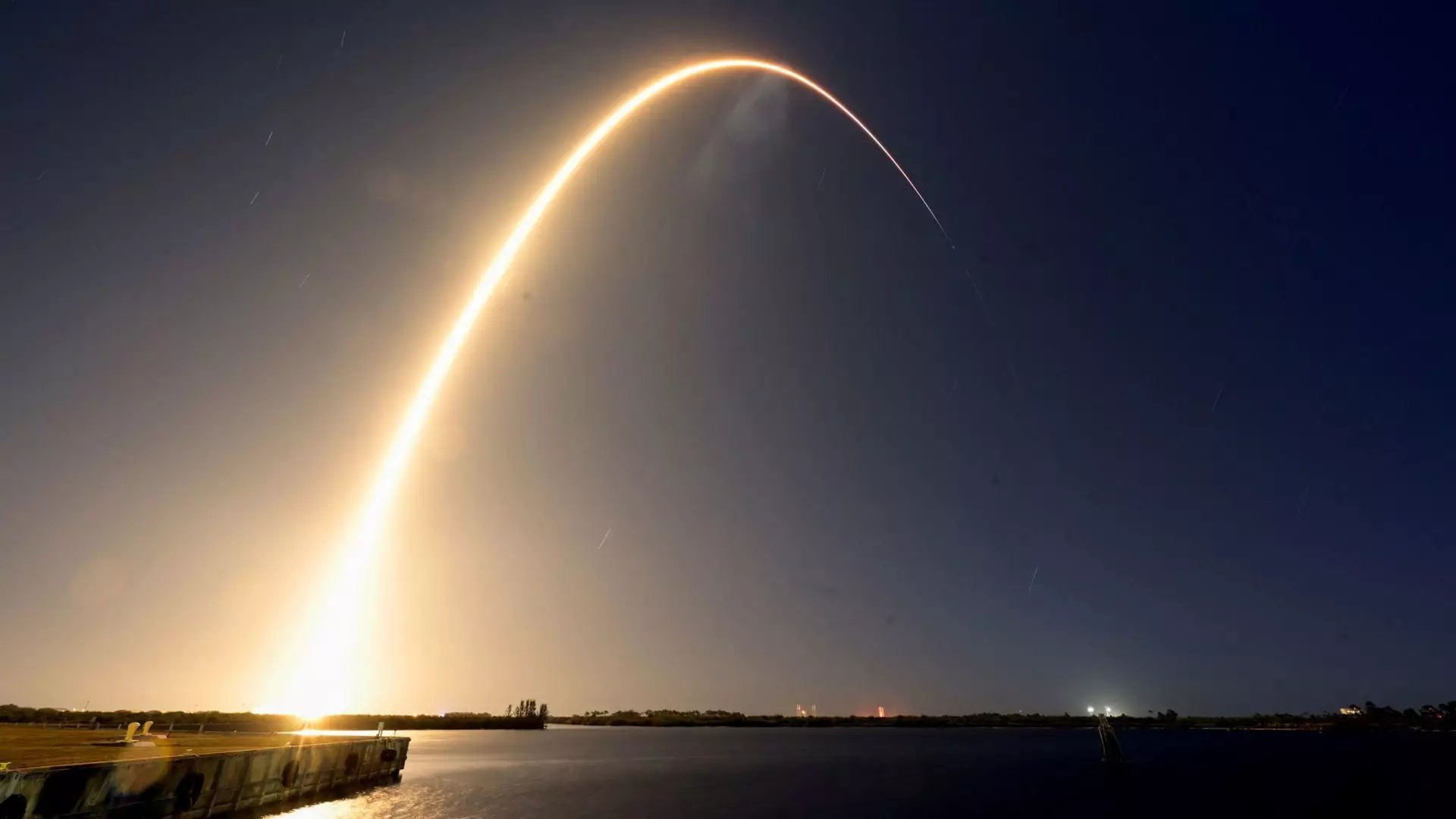In an exciting turn of events for lunar exploration, Texas-based Firefly Aerospace has embarked on a monumental journey with its “Blue Ghost” lunar lander. Launched aboard SpaceX’s Falcon 9 rocket, this mission marks a crucial step in the young, yet rapidly evolving, landscape of commercial spaceflight. As organizations like NASA turn their attention back to the Moon, the race for lunar services is heating up, and Firefly is determined to carve out its niche in this competitive market.
Firefly Aerospace is primarily recognized for its Alpha rocket, which has earned the company a reputation for launching satellites into orbit. Nevertheless, the company’s recent push into the realm of lunar exploration signifies a strategic shift in its operational focus. Firefly’s ambitious plans to develop lunar landers and space tugs showcase its intent to diversify its offerings and tap into the growing demand for lunar logistics. CEO Jason Kim has emphasized that the company is now “fully focused on execution” as it undertakes the difficult task of ensuring a successful soft landing on the lunar surface.
The Blue Ghost, an impressive nearly 7-foot-tall lander, is not only a technical marvel but also a symbol of creativity; it derives its name from a rare species of firefly found in the United States. With a NASA-based contract valued at $101 million, Blue Ghost is set to carry 10 payloads—an eclectic mix of governmental and commercial objectives. This mission is especially significant, being the third such endeavor under NASA’s Commercial Lunar Payload Services (CLPS) initiative, which aims to facilitate continuous delivery of scientific instruments and cargo to the Moon.
Firefly’s journey comes amid a burgeoning industry with several players already in the field. Other companies like Astrobotic and Intuitive Machines attempted their own moon missions, each facing challenges that have highlighted the difficulty of this venture. Astrobotic’s efforts fell short, while Intuitive Machines faced a harrowing experience when their lander unexpectedly tipped—but, remarkably, it survived the ordeal. These competing ventures underline the complexity of lunar missions and the preparation required to achieve success.
In this context, Firefly’s ambitions seem particularly timely, as the company has publicly outlined 17 key milestones that the Blue Ghost mission must achieve, culminating in a successful landing on the lunar surface. This transparency offers insights into project timelines and operational objectives, something that can instill confidence in potential partners and stakeholders.
The mission to land Blue Ghost is currently on a 45-day trajectory, with a planned landing date set for March 2. Firefly has earmarked the Mare Crisium lunar basin, a scientifically interesting area on the Moon’s near side, as the target site. Once successfully landed, the company aims for its lander to operate for a full lunar day—translating to about 14 Earth days—as well as extending operations into a portion of the lunar night. Such objectives not only reflect the technological capabilities of the lander but also indicate a broader ambition to contribute to long-term lunar research.
Moreover, this launch was not just about Firefly; it should also be noted that the Falcon 9 lifted two lunar landers into orbit. The inclusion of Japan’s ispace, which is conducting its second lunar mission after a previous failure, underscores the collaborative and increasingly international nature of lunar exploration. Firefly’s rideshare agreement with ispace highlights an emerging trend in the industry where companies can optimize costs and logistics through cooperative arrangements.
As we look toward the horizon of lunar exploration, 2025 is expected to witness a surge of activities, with NASA anticipating as many as five U.S. companies poised to launch lunar missions. This wave of impending launches indicates a significant shift in space exploration, as the Moon becomes a more prominent site for scientific investigations and potential commercial undertakings.
Firefly Aerospace’s Blue Ghost mission represents both a challenge and an opportunity in the rapidly evolving landscape of lunar exploration. As the industry gears up for an era defined by expanding exploratory initiatives, companies like Firefly embody the entrepreneurial spirit driving humanity’s next great leap into the cosmos. Indeed, with each launch and each landing, we edge closer to fulfilling dreams of interplanetary exploration and establishing a foothold on another celestial body.

